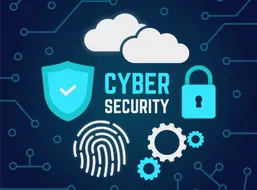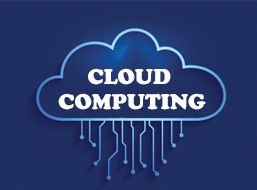Top HR Management Interview Questions and Answers
1. What are the key responsibilities of an HR manager?
An HR manager is responsible for managing various aspects of human resources, including recruitment, employee relations, performance management, training and development, benefits administration, and ensuring legal compliance with labor laws. They also act as a liaison between employees and management, handle conflict resolution, and support organizational goals by managing the workforce effectively.
2. What is the importance of recruitment in HR management?
Recruitment is crucial because it helps organizations hire the right talent that aligns with the company's goals and values. The HR department is responsible for sourcing, screening, interviewing, and hiring qualified candidates. A good recruitment process ensures that the company has a competitive workforce and reduces turnover rates, ultimately contributing to productivity and profitability.
3. What is performance management?
Performance management is the process of ensuring that employees are meeting organizational goals and objectives. It involves setting performance expectations, providing regular feedback, conducting performance appraisals, and offering support or training when needed. This process helps improve individual performance and aligns employees’ efforts with the overall goals of the organization.
4. How do you handle employee conflict in the workplace?
To handle employee conflict, HR managers should first ensure they understand the issue by listening to both parties involved. After gathering all relevant information, they can mediate a resolution through open dialogue and find a compromise. If necessary, further intervention, such as team-building activities or professional counseling, may be required to address ongoing issues.
5. What is the role of HR in employee training and development?
HR plays a key role in identifying training needs within the organization, developing training programs, and ensuring that employees are equipped with the necessary skills to succeed. HR managers work closely with department heads to assess performance gaps, develop training initiatives, and monitor the effectiveness of these programs. Continuous development ensures that employees grow in their roles and are prepared for future challenges.
6. What is employee engagement, and why is it important?
Employee engagement refers to the level of emotional commitment an employee has towards their organization and its goals. High employee engagement leads to increased productivity, better retention, and a positive workplace culture. HR professionals play a significant role in fostering engagement through communication, recognition, opportunities for growth, and creating a positive work environment.
7. How do you measure the effectiveness of HR programs?
The effectiveness of HR programs can be measured using various metrics such as employee retention rates, performance improvement, employee satisfaction surveys, training effectiveness, and the time-to-fill rate for open positions. HR managers analyze these metrics to identify areas for improvement and ensure that HR initiatives align with the company’s overall goals.
8. What is the difference between recruitment and selection?
Recruitment is the process of attracting qualified candidates to apply for job openings, while selection involves evaluating and choosing the best candidates from the pool of applicants. Recruitment involves job postings, advertisements, and sourcing candidates, while selection includes interviews, assessments, and background checks to ensure the best fit for the role.
9. What are the main challenges HR professionals face?
Some of the main challenges HR professionals face include employee retention, managing a diverse workforce, ensuring compliance with labor laws, maintaining employee morale, and handling conflict resolution. Additionally, adapting to changing technologies and staying ahead of trends like remote work and employee wellness are critical issues HR managers must address.
10. What are the key components of an employee benefits program?
An employee benefits program typically includes health insurance, retirement plans (such as 401(k) or pensions), paid time off, bonuses, employee assistance programs (EAPs), and stock options. HR professionals are responsible for managing and communicating these benefits to employees to ensure satisfaction and retention.
11. What is an HRIS (Human Resources Information System)?
An HRIS is a software solution used by HR departments to manage and streamline HR processes, including recruitment, payroll, benefits administration, performance management, and employee data storage. HRIS systems allow HR managers to improve efficiency, reduce errors, and make data-driven decisions related to employee management.
12. How do you conduct a job analysis?
Job analysis involves identifying and documenting the responsibilities, requirements, skills, and qualifications necessary for a specific role. HR professionals gather this information through methods such as interviews with current employees, surveys, and observation. The results of a job analysis are used to create job descriptions and ensure proper recruitment strategies.
13. What is the significance of a well-structured onboarding process?
A well-structured onboarding process helps new hires integrate into the organization smoothly. It involves introducing them to company policies, culture, and values, as well as providing necessary training. Effective onboarding improves employee retention, job satisfaction, and reduces the time it takes for employees to reach full productivity.
14. What is the role of HR in fostering workplace diversity and inclusion?
HR plays a vital role in promoting diversity and inclusion by creating policies that encourage hiring from diverse backgrounds, ensuring equal opportunities, and fostering a culture of respect and acceptance. HR also organizes training sessions to address unconscious bias and discrimination and supports employees from diverse backgrounds through mentorship and resource groups.
15. How do you handle disciplinary actions in the workplace?
Disciplinary actions should be handled systematically and fairly. The HR manager should investigate the issue, gather facts, and ensure the employee has an opportunity to explain their side. Depending on the severity, HR may issue a warning, probation, or termination, with clear documentation to prevent future disputes and ensure legal compliance.
16. What is succession planning, and why is it important?
Succession planning is the process of identifying and developing internal talent to fill key leadership positions in the future. It ensures that the organization has a pool of qualified candidates ready to step into roles when needed, minimizing disruptions in leadership and maintaining continuity.
17. How do you handle performance appraisals?
Performance appraisals are conducted through regular feedback sessions, where managers assess an employee’s job performance based on predefined metrics. HR professionals ensure that appraisals are fair, consistent, and objective, and they assist in setting development goals for employees to improve in their roles
.18. What is the role of HR in organizational change management?
HR plays a crucial role in change management by helping employees understand and adapt to changes within the organization. This includes communicating the reasons for the change, offering training, addressing concerns, and ensuring that employees have the support they need during the transition process.
19. How do you ensure compliance with labor laws?
HR ensures compliance with labor laws by staying updated on the latest regulations, implementing policies that adhere to these laws, and conducting regular training sessions for employees and management. HR also conducts audits to ensure proper documentation, wages, benefits, and working conditions meet legal requirements.
20. What is the importance of employee retention strategies?
Employee retention strategies are essential for minimizing turnover, which can be costly and disruptive. Retention strategies include offering competitive salaries, benefits, career development opportunities, and fostering a positive work culture. By investing in employee engagement and job satisfaction, HR helps retain top talent and reduce recruitment costs.
21. What strategies do you use to recruit passive candidates?
To recruit passive candidates, HR professionals utilize networking, social media platforms like LinkedIn, and referrals from current employees. Building a strong employer brand and maintaining relationships with talented professionals can help attract passive candidates when job opportunities arise. Engaging with potential candidates before they are actively seeking a job can increase the chances of a successful hire.
22. What is an HR audit, and why is it necessary?
An HR audit is a comprehensive review of an organization's HR policies, practices, and procedures to ensure compliance with legal standards and alignment with the organization's goals. It helps identify gaps in the HR processes, improve efficiency, and ensure that the company is adhering to labor laws and industry best practices.
23. What is the difference between training and development?
Training is focused on equipping employees with the specific skills they need to perform their current job roles, while development is more long-term and focuses on enhancing employees' overall career growth and potential. Training is typically role-specific, while development includes activities such as leadership programs, mentorship, and skill-building for future roles.
24. What is the role of HR in employee motivation?
HR plays a key role in employee motivation by ensuring employees feel valued, recognized, and supported. This can be achieved through competitive compensation, benefits, professional development opportunities, clear career progression paths, and fostering a positive work culture. Regular feedback, rewards, and recognition programs also contribute to keeping employees motivated and engaged.
25. What is the difference between internal and external recruitment?
Internal recruitment involves filling vacancies with current employees by promoting, transferring, or reassigning them to new roles, whereas external recruitment involves hiring candidates from outside the organization. Internal recruitment can boost employee morale and reduce hiring costs, while external recruitment helps bring in fresh perspectives and skills that may be lacking within the organization.
26. What are the most common types of employee benefits?
Common employee benefits include health insurance, retirement plans, paid time off (PTO), bonuses, profit sharing, life insurance, and disability benefits. Additionally, some companies offer perks such as gym memberships, flexible work arrangements, and professional development allowances to improve employee satisfaction and retention.
27. What is the concept of "employee lifecycle"?
The employee lifecycle refers to the stages an employee goes through during their time with an organization, from recruitment, onboarding, development, performance reviews, to separation or retirement. HR professionals focus on managing each stage to ensure a positive experience, maintain engagement, and retain talent throughout the lifecycle.
28. What are the main principles of labor law compliance?
The main principles of labor law compliance include respecting employees’ rights to fair wages, non-discriminatory treatment, safe working conditions, and the right to join a union. Organizations must adhere to various labor laws such as minimum wage standards, overtime pay, anti-discrimination laws, and workplace safety regulations to ensure a fair and safe work environment.
29. How do you deal with an underperforming employee?
To address an underperforming employee, HR professionals should first identify the root cause of the issue through a performance review or one-on-one discussion. The employee should be provided with clear expectations and specific feedback. Depending on the situation, HR may offer additional training, mentoring, or a performance improvement plan (PIP) to help the employee improve.
30. What is the significance of having a clear job description?
A clear job description is crucial as it outlines the duties, responsibilities, qualifications, and expectations for a role. It serves as a guideline for both the employer and the employee, ensuring alignment in job expectations. Clear job descriptions also help in recruitment, performance management, and legal compliance.
31. What is the concept of "employer branding"?
Employer branding is the process of creating a positive reputation for an organization as an employer. It involves promoting the company’s values, culture, work environment, and employee experiences to attract top talent. A strong employer brand helps differentiate the company from competitors and encourages qualified candidates to apply for positions.
32. How do you handle layoffs and terminations?
HR professionals handle layoffs and terminations with empathy, fairness, and legal compliance. Clear communication is essential, and employees should be informed of the reasons for their dismissal. HR ensures that proper documentation is maintained, severance packages are provided, and employees are supported through the transition process, which may include job search assistance or career counseling.
33. What is the role of HR in workplace health and safety?
HR plays a critical role in ensuring that the workplace complies with health and safety regulations. This includes conducting regular safety training, implementing safety protocols, ensuring the work environment is hazard-free, and addressing any safety concerns raised by employees. HR professionals work closely with management to create a safety-focused culture.
34. How do you manage a remote workforce?
Managing a remote workforce requires clear communication, setting expectations, and maintaining regular check-ins. HR professionals ensure that remote employees have the tools and resources they need to perform their job effectively. They also focus on creating a strong virtual culture through team-building activities, ensuring work-life balance, and monitoring employee performance to ensure productivity.
35. What is the significance of exit interviews?
Exit interviews provide valuable insights into why employees leave the organization. HR uses this feedback to identify areas of improvement in management practices, company culture, and work conditions. It helps HR implement changes that can improve retention and reduce turnover in the future.
36. What is a PIP (Performance Improvement Plan)?
A PIP is a formal process used by HR to help underperforming employees improve their job performance. It outlines specific goals, expectations, and deadlines for improvement, along with the resources and support the employee will receive. The plan typically spans a few weeks or months, and if performance does not improve, further disciplinary action may follow.
37. What are the key challenges HR faces during mergers and acquisitions?
During mergers and acquisitions, HR faces challenges related to aligning organizational cultures, managing employee uncertainty, handling potential layoffs, and integrating different HR policies and procedures. Effective communication and employee support are crucial to maintaining morale and ensuring a smooth transition.
38. What is HR's role in managing a diverse workforce?
HR is responsible for promoting diversity and inclusion within the organization. This includes developing policies that prevent discrimination, providing diversity training, and ensuring equal opportunities for all employees. HR also fosters an inclusive culture where employees from different backgrounds can collaborate effectively.
39. What is the significance of having a company policy handbook?
A company policy handbook serves as a guide for employees, outlining the organization's policies, rules, and expectations. It helps ensure consistency in decision-making and provides clarity on company procedures. It also serves as a reference for both employees and managers, reducing misunderstandings and potential conflicts.
40. What is HR's role in fostering employee wellness?
HR plays a key role in promoting employee wellness by implementing programs that support physical, mental, and emotional health. These programs may include health insurance benefits, gym memberships, stress management workshops, flexible working hours, and mental health resources. HR professionals ensure that employees maintain a healthy work-life balance, which leads to higher productivity and lower absenteeism.
41. What are the benefits of using HR analytics?
HR analytics involves using data to make informed decisions about hiring, performance management, employee engagement, and retention. By using analytics, HR professionals can identify trends, predict future workforce needs, and measure the effectiveness of HR strategies. This helps in making data-driven decisions that optimize human capital and improve organizational outcomes.
42. How do you handle employee grievances?
When handling employee grievances, HR professionals must listen carefully and remain neutral. The process typically involves understanding the issue, investigating it, and trying to find a fair resolution. HR should ensure confidentiality, involve relevant parties if needed, and work towards a resolution that aligns with company policies while maintaining a positive work environment.
43. What is the role of HR in organizational change management?
HR plays a crucial role in managing organizational change by preparing and supporting employees during transitions. This involves clear communication, providing training, and offering support throughout the change process. HR ensures that employees understand the changes, address their concerns, and stay engaged, leading to smoother implementation of new strategies or technologies.
44. What is an employee retention strategy, and why is it important?
An employee retention strategy focuses on keeping valuable employees by addressing factors that influence their satisfaction and commitment to the organization. This includes offering competitive compensation, career development opportunities, work-life balance, recognition, and fostering a positive work environment. Retaining top talent reduces turnover costs and maintains organizational stability.
45. How do you ensure compliance with labor laws?
To ensure compliance with labor laws, HR professionals must stay up-to-date with local, state, and federal regulations. They should regularly review and update company policies, provide training for managers, and conduct audits to ensure practices are legally sound. HR should also document employee interactions and processes to protect the company from potential legal issues.
46. How do you create a performance appraisal system?
A performance appraisal system should be clear, consistent, and aligned with organizational goals. It involves setting measurable goals, gathering feedback from multiple sources (self-assessments, managers, peers), and providing regular evaluations. HR should ensure that appraisals are objective and constructive, providing employees with feedback that helps them grow professionally.
47. What is a succession planning process?
Succession planning involves identifying and developing internal employees to fill key leadership positions in the future. HR professionals assess the current workforce, identify high-potential employees, and offer training and development opportunities to prepare them for higher roles. Succession planning ensures that the organization has a pipeline of skilled leaders ready for promotion, minimizing disruptions in leadership.
48. What is the importance of employee onboarding?
Employee onboarding is critical as it sets the stage for new employees to succeed in their roles. A well-structured onboarding process helps new hires understand the company culture, policies, and expectations. It also provides them with the tools and resources they need to perform their job effectively, improving retention and reducing early turnover.
49. What is the role of HR in employee compensation management?
HR is responsible for developing and managing a fair and competitive compensation system. This includes setting salary ranges, determining bonus structures, and ensuring that compensation practices are in line with industry standards. HR must also ensure that compensation practices comply with labor laws and internal equity while supporting employee motivation and retention.
50. How do you manage conflict resolution in the workplace?
HR professionals address workplace conflicts by investigating the issues objectively, understanding the perspectives of all parties involved, and finding common ground. They facilitate open communication between the employees, mediate discussions, and encourage compromise. HR also ensures that the conflict resolution process aligns with company policies and supports a respectful work environment.
51. What are some ways to improve employee engagement?
Employee engagement can be improved by fostering a positive work environment, recognizing achievements, providing opportunities for career development, and promoting work-life balance. HR can implement engagement surveys to gather employee feedback, and based on the results, tailor initiatives that align with employee needs and enhance overall job satisfaction.
52. What is the role of HR in managing employee relations?
HR is responsible for managing employee relations by ensuring open communication, resolving conflicts, and maintaining positive relationships between employees and the organization. HR professionals also handle disciplinary actions, monitor workplace behavior, and ensure that employees are treated fairly and consistently, which helps in creating a harmonious work environment.
53. How do you handle a high employee turnover rate?
High employee turnover can be addressed by conducting exit interviews to identify the root causes of departure, whether it's dissatisfaction with compensation, work culture, or career growth opportunities. HR can then implement retention strategies, such as improving work conditions, offering career advancement, and introducing employee wellness programs to enhance job satisfaction and loyalty.
54. How do you motivate a team to meet organizational goals?
HR can motivate teams by ensuring alignment between individual goals and organizational objectives. Clear communication, setting achievable goals, recognizing achievements, and offering incentives such as bonuses or professional development opportunities can help. Providing employees with autonomy and fostering a positive, inclusive work environment also boosts motivation and productivity.
55. What is the role of HR in managing diversity and inclusion?
HR plays a vital role in promoting diversity and inclusion by creating policies and programs that ensure equal opportunities for all employees. HR professionals facilitate diversity training, implement non-discriminatory hiring practices, and encourage a culture where all employees feel valued and respected. Inclusive practices contribute to improved employee satisfaction and better decision-making.
56. What is the significance of conducting employee surveys?
Employee surveys provide valuable feedback on job satisfaction, workplace culture, and areas for improvement. HR can use survey results to identify issues that may affect employee morale, engagement, and retention. By acting on employee feedback, HR demonstrates that it values employees' opinions, which helps to build trust and improve overall organizational performance.
57. How do you ensure effective communication between management and employees?
Effective communication is achieved by fostering an open-door policy, using various communication channels such as emails, meetings, and internal platforms, and encouraging transparency from management. HR can organize regular town hall meetings, feedback sessions, and surveys to ensure that employees’ voices are heard and that management addresses concerns in a timely manner.
58. How do you manage a multi-generational workforce?
Managing a multi-generational workforce requires understanding the unique needs, preferences, and work styles of different age groups. HR should offer flexible work options, tailor communication strategies to various generations, and promote intergenerational collaboration. Providing training on diversity and inclusion can help bridge generational gaps and foster a collaborative work environment.
59. What are the key factors in ensuring a positive work environment?
Key factors for a positive work environment include clear communication, mutual respect, opportunities for career growth, work-life balance, and employee recognition. HR can implement programs that foster collaboration, ensure fair treatment, and address concerns promptly. A positive work culture leads to higher employee morale, retention, and productivity.
60. What is the importance of compliance with OSHA regulations?
Compliance with OSHA (Occupational Safety and Health Administration) regulations is crucial for maintaining a safe and healthy workplace. HR is responsible for ensuring that the organization adheres to OSHA standards, conducts regular safety audits, and provides employees with necessary safety training. By ensuring compliance, HR helps minimize workplace accidents and legal liabilities.
61. What is the difference between training and development?
Training focuses on improving an employee's specific skills and knowledge related to their current role, such as learning new software or technical abilities. Development, on the other hand, is broader and aims at preparing employees for future roles within the organization by building leadership skills, fostering strategic thinking, and promoting long-term growth. Both are critical for the success and growth of both the individual and the company.
62. How do you handle employee burnout?
Employee burnout can be addressed by recognizing early signs such as decreased performance, disengagement, or absenteeism. HR should implement wellness programs, encourage a balanced workload, and promote work-life balance initiatives. Regular check-ins, offering flexible work hours, and providing mental health support can also help prevent and manage burnout among employees.
63. What are the key challenges of managing remote employees?
Managing remote employees presents challenges in terms of communication, team cohesion, performance monitoring, and maintaining a strong organizational culture. To address these challenges, HR can use technology to facilitate regular communication, establish clear expectations, provide virtual team-building activities, and ensure that employees have the necessary tools to work effectively from a distance.
64. How do you deal with employee resistance to change?
Employee resistance to change is common, but HR can address it by communicating the benefits of the change, offering support, and addressing concerns. HR can organize workshops, provide training, and involve employees in the change process to increase their buy-in. Demonstrating the positive impact of the change on both the organization and employees can help reduce resistance and foster acceptance.
65. What is the importance of exit interviews?
Exit interviews help HR understand why employees are leaving the company, whether it's due to dissatisfaction, career advancement, or external opportunities. This information can be used to improve retention strategies, identify potential issues within the workplace, and make necessary adjustments to HR policies. Exit interviews provide valuable insights into organizational strengths and areas for improvement.
66. How do you manage compensation and benefits programs?
HR is responsible for designing and managing compensation and benefits programs that are competitive, equitable, and aligned with organizational goals. This involves conducting salary surveys, setting fair compensation structures, and providing employees with attractive benefits such as health insurance, retirement plans, and paid leave. HR ensures that these programs are regularly reviewed and updated to remain competitive in the market.
67. What is the role of HR in employee engagement surveys?
HR plays a key role in designing and administering employee engagement surveys to gather feedback on job satisfaction, work environment, and company culture. HR analyzes the survey results, identifies trends and areas for improvement, and works with leadership to implement changes based on the feedback. Employee engagement surveys help HR ensure that employees are satisfied and motivated, leading to higher productivity and retention.
68. How do you ensure a diverse hiring process?
To ensure a diverse hiring process, HR should implement fair recruitment practices, such as using blind recruitment methods, ensuring diverse candidate sourcing, and providing unconscious bias training for hiring managers. It is also important to set diversity goals, evaluate hiring practices regularly, and create an inclusive culture that attracts individuals from diverse backgrounds.
69. What are the best practices for handling layoffs?
Handling layoffs requires empathy, clear communication, and fairness. HR should ensure that the process is transparent and that employees are treated with dignity and respect. Providing severance packages, offering outplacement services, and giving employees time to prepare for the transition are important best practices. Additionally, HR should work closely with management to communicate the reasons for the layoff and offer support to remaining employees.
70. How do you support work-life balance for employees?
HR supports work-life balance by offering flexible work hours, remote work options, and promoting a culture where taking time off is encouraged. HR can also provide resources such as employee wellness programs, stress management workshops, and family-friendly policies to help employees balance their professional and personal responsibilities. A strong focus on work-life balance can improve employee satisfaction and reduce burnout.
71. What is the role of HR in employee wellness programs?
HR is responsible for designing and implementing employee wellness programs that promote physical, mental, and emotional well-being. This includes providing access to health insurance, organizing fitness challenges, offering counseling services, and promoting a healthy work environment. Wellness programs help reduce absenteeism, increase productivity, and improve overall employee morale.
72. How do you maintain confidentiality in HR processes?
Confidentiality is critical in HR processes, and HR professionals must ensure that personal information about employees is protected. This involves limiting access to sensitive data, using secure storage systems, and only sharing information on a need-to-know basis. HR should also train employees and managers on the importance of confidentiality and the legal requirements surrounding personal data.
73. How do you manage a large workforce?
Managing a large workforce involves delegating tasks, using technology to streamline processes, and ensuring effective communication. HR should implement clear policies, procedures, and performance management systems to maintain consistency. Regular meetings, employee surveys, and feedback mechanisms can help keep employees engaged and address any concerns promptly.
74. What are the most common HR metrics you use to evaluate success?
HR metrics such as employee turnover rate, time-to-fill open positions, absenteeism rate, employee satisfaction and engagement levels, and training effectiveness are commonly used to evaluate HR's impact. These metrics provide insight into the efficiency of recruitment processes, employee retention efforts, and overall organizational health, helping HR to make informed decisions.
75. What are the key qualities of a successful HR professional?
Successful HR professionals possess strong communication skills, empathy, and a deep understanding of labor laws and company policies. They must be problem solvers, capable of handling complex situations, and able to maintain confidentiality. They should also be skilled in conflict resolution, performance management, and employee relations while fostering a positive workplace culture.
76. How do you handle workplace discrimination?
Workplace discrimination should never be tolerated. HR should ensure that there are clear anti-discrimination policies in place and that employees are educated about them. When discrimination issues arise, HR must investigate the matter thoroughly, provide a fair resolution, and take appropriate disciplinary actions if necessary. Ensuring that all employees are treated fairly and respectfully is essential for creating an inclusive work environment.
77. What is the role of HR in fostering organizational culture?
HR plays a key role in shaping and maintaining an organization's culture by promoting values, behaviors, and attitudes that align with the company's mission and goals. HR is responsible for recruiting individuals who fit well with the culture, offering training on company values, and ensuring that leadership models the desired culture. A positive organizational culture helps improve employee engagement and business outcomes.
78. How do you manage employee performance in a remote work environment?
Managing employee performance in a remote work environment requires clear communication, goal setting, and regular check-ins. HR can implement performance management tools to track progress, provide feedback, and ensure that employees are meeting expectations. Offering virtual training, encouraging team collaboration, and promoting a results-oriented work culture can help manage performance effectively.
79. How do you ensure employee motivation during challenging times?
During challenging times, HR should provide support through regular communication, transparent updates, and recognizing employee efforts. HR can introduce initiatives such as employee recognition programs, wellness support, and flexibility in work hours to reduce stress. Ensuring that employees understand the company's long-term vision and their role in overcoming challenges can help keep them motivated.
80. What is your approach to managing payroll?
Managing payroll involves ensuring that employees are paid accurately and on time. HR should stay informed about payroll laws, tax regulations, and company policies. HR should also use automated payroll systems to streamline the process, ensure that all deductions (e.g., taxes, insurance) are correct, and maintain confidentiality regarding employee salaries.
81. What steps do you take to ensure compliance with labor laws?
HR ensures compliance with labor laws by staying up-to-date with local, state, and federal regulations. This includes conducting regular audits, implementing training programs for management, and reviewing policies to ensure they align with legal requirements. HR also works closely with legal advisors to ensure that employment practices adhere to labor laws, covering areas such as wage laws, workplace safety, discrimination, and employee rights
.82. How do you handle conflict resolution between employees?
Conflict resolution begins with listening to both parties and understanding the issue. HR should mediate discussions, focusing on finding a solution that is fair to both sides while maintaining a positive work environment. HR might suggest alternative solutions, such as mediation or team-building activities, and work with managers to ensure that the conflict is resolved in a way that supports the company's values and goals.
83. How do you handle employee performance appraisals?
Employee performance appraisals involve setting clear, measurable goals for employees and regularly evaluating their progress. HR plays a role in ensuring that the process is fair, consistent, and objective. HR works with managers to provide constructive feedback and create development plans to address areas of improvement. Performance appraisals should be transparent and focused on growth and development rather than just evaluation.
84. What strategies do you use to retain top talent?
To retain top talent, HR should offer competitive compensation and benefits packages, provide career growth opportunities, and maintain a positive workplace culture. Engaging employees through regular feedback, recognition programs, and professional development initiatives can also help. Ensuring work-life balance and fostering strong relationships between managers and employees further contribute to long-term retention.
85. What are some methods you use to reduce employee turnover?
To reduce turnover, HR should conduct stay interviews to understand why employees remain with the company. Offering competitive compensation, clear career paths, and recognition for achievements can enhance employee satisfaction. Improving onboarding, providing mentoring programs, and ensuring that employees have a sense of purpose and alignment with the company's mission are other effective strategies.
86. How do you handle employee grievances?
HR should create a safe environment where employees feel comfortable expressing concerns. Grievances are addressed through a structured process that involves investigation, resolution, and follow-up. HR ensures that the process is unbiased and confidential, providing support to both the employee and the organization while seeking a fair and satisfactory resolution for all parties involved.
87. How do you manage employee onboarding?
Employee onboarding should be a structured and welcoming process that includes introducing new hires to the company culture, policies, and procedures. HR is responsible for providing new hires with the necessary training, resources, and tools to succeed. A well-designed onboarding process helps employees integrate quickly, reduces turnover, and increases job satisfaction.
88. How do you handle payroll discrepancies?
Payroll discrepancies are addressed by investigating the issue promptly, communicating with the employee involved, and reviewing payroll records to identify any errors. HR works with the payroll department to make necessary corrections and ensure that employees receive accurate payments. Transparency and clear communication are essential in resolving payroll issues effectively and maintaining employee trust.
89. What role does HR play in crisis management?
HR plays a crucial role in crisis management by ensuring that employees' well-being is prioritized during emergencies, whether it's a natural disaster, financial downturn, or health crisis. HR should communicate regularly with employees, provide resources for support, and ensure that workplace safety protocols are in place. HR also plays a key role in maintaining morale, offering flexibility, and ensuring that critical business functions continue during a crisis.
90. How do you create a healthy organizational culture?
Creating a healthy organizational culture involves promoting values such as respect, collaboration, and transparency. HR can help by encouraging open communication, organizing team-building activities, and implementing policies that prioritize diversity, inclusion, and employee well-being. Leadership should model the desired culture, and HR should provide training and resources that align with these values.
91. How do you handle promotions and internal job postings?
HR ensures that promotions and internal job postings are handled transparently and fairly. Employees should be informed about opportunities for career advancement, and HR ensures that the promotion process is based on merit and aligned with company policies. Internal job postings should be widely communicated, and HR should encourage employees to apply for roles that align with their skills and career aspirations.
92. What is your approach to workplace diversity and inclusion?
HR fosters workplace diversity and inclusion by implementing policies that promote equal opportunities for all employees, regardless of race, gender, age, or background. HR should educate employees on the importance of diversity, provide resources for underrepresented groups, and work with leadership to ensure that hiring practices are unbiased and inclusive. Creating an inclusive environment helps attract top talent and improves company performance.
93. How do you handle confidential employee information?
HR must handle confidential employee information with the utmost care. This includes securing employee records, limiting access to sensitive data, and ensuring that only authorized personnel are privy to such information. HR should also have clear protocols for maintaining confidentiality in communications and ensuring compliance with privacy regulations such as GDPR.
94. What is the importance of continuous learning and development in HR?
Continuous learning and development are essential for HR professionals to stay up-to-date with changes in labor laws, best practices, and technology. HR must also encourage a culture of learning within the organization by offering training programs, workshops, and leadership development opportunities. A well-trained workforce is more adaptable, motivated, and capable of driving business success.
95. How do you handle employee absences?
HR handles employee absences by ensuring that policies regarding sick leave, vacation, and paid time off are clearly communicated and consistently applied. HR should track absences, communicate with employees to understand the reasons for their absence, and offer support when needed. In cases of frequent absences, HR can work with managers to identify underlying issues and address them accordingly.
96. What are the benefits of a well-structured employee recognition program?
A well-structured employee recognition program boosts morale, enhances engagement, and increases retention. Recognizing employee achievements, whether through awards, public acknowledgment, or rewards, creates a positive work environment. It also motivates employees to continue performing well, fosters loyalty, and contributes to a culture of appreciation and respect.
97. What is your strategy for managing talent acquisition?
Managing talent acquisition involves understanding the company's hiring needs, sourcing candidates from diverse channels, and ensuring that the recruitment process is streamlined and efficient. HR should focus on building strong relationships with external partners, using technology to manage the hiring process, and maintaining a strong employer brand to attract top talent. Ensuring that candidates are a cultural and skills fit is also essential.
98. How do you maintain employee engagement during remote work?
Maintaining employee engagement during remote work requires regular communication, team-building activities, and providing employees with the tools and support they need to work efficiently. HR should encourage a strong sense of community by organizing virtual meetings, recognition programs, and social activities. Managers should check in with their teams regularly to ensure they feel supported and engaged.
99. What is the role of HR in organizational change?
HR plays a vital role in managing organizational change by ensuring that employees understand the reasons for the change, the process involved, and the expected outcomes. HR communicates openly, provides training, and supports employees through the transition. HR also works with leadership to align the change with company values and ensures that the workforce remains engaged and motivated throughout the change process.
100. What tools or software do you use for HR management?
HR management tools such as Human Resource Information Systems (HRIS), Applicant Tracking Systems (ATS), performance management software, and payroll systems are used to streamline HR processes. These tools help HR professionals track employee records, manage recruitment, monitor performance, and ensure compliance. Leveraging technology improves efficiency, reduces errors, and allows HR to focus on strategic initiatives.







